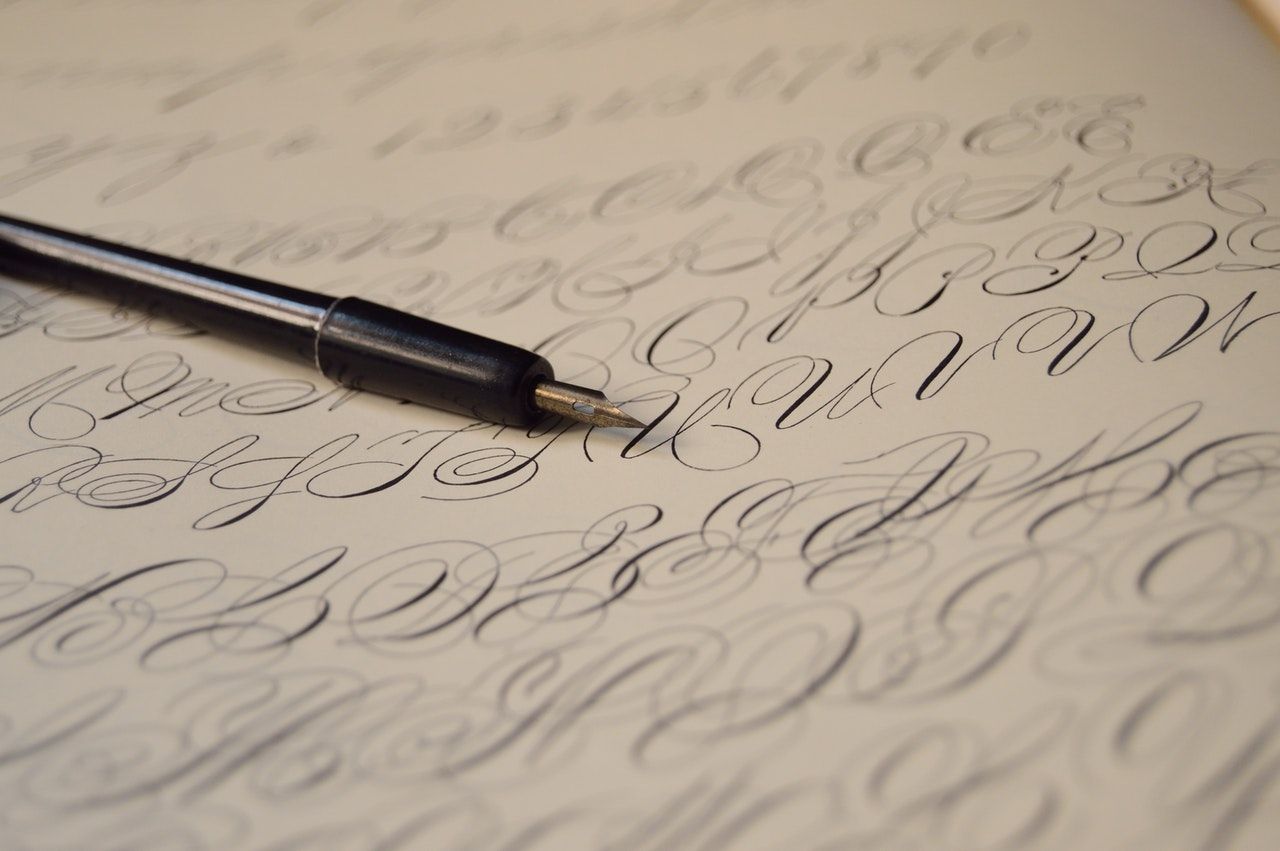Calligraphy is a beautiful skill that is easy to get lost in. If you’ve ever found yourself admiring beautiful works of calligraphy online wishing you could do the same, this is the post for you.
TIP #1: SLOW DOWN!
If you learn calligraphy, don’t expect to be an expert in a month. You'll think that doing work quickly will help you learn more in less time. You're wrong!
You won't learn the importance of calming down when you practice calligraphy unless you take a calligraphy lesson. This tip alone makes you instantly develop your calligraphy. You can also check an excellent guide on Calligraphy on 9Mousai.
Moving slow lets you acquire finer letter shapes and strokes. It's not supposed to be quick calligraphy. Take the time while your calligraphy is being practiced.Think of it as a nice moment to rest and take your time to practice calligraphy. You can check our free course on calligraphy here.
TIP #2: PAUSE BETWEEN STROKES
This goes hand-in-hand with slowing as you do calligraphy. Pause your strokes will help you even distinguish your letters from each other. It also encourages you to think more about letter forms, and lets you develop muscle memory.
Raise the pen or take a short break while you practice each stroke.
The calligraphy of modern times is distinct from cursive. You tend to type rapidly and continually as you compose in cursive. You have to compose slowly when you do calligraphy. Pause between the strokes will help you develop thickness and thinness to distinguish between cursive calligraphy.
TIP #3: HOLD THE BRUSH PEN PROPERLY
Yes, it is a lettering type. This does not mean, though, that it was performed in the same manner. When we practice calligraphy, we handle the Brush Pen in the same manner as we keep a normal Handle. There are several easy assumptions. If you want your calligraphy to better, make sure that you change the way you handle your brush style.
Three things to remember as you keep the brush style:
• Always be sure that the brush style is at an angle of around 45 degrees. This is what allows you to master and to achieve seamless transitions between the thick and thin strokes.
• Make sure that you are loose in your pen grasp. If you keep your stylus tight, your hand can get tired quicker and you can't move your stylus freely.
• Hold the pen off the tip a little.
This is recommended based on people's calligraphy practice. When we write, I know many people handle their pen differently. Find a grip that is sufficiently comfortable for you.
TIP #4: PEN PRESSURE AND BODY POSTURE
In calligraphy, it means that it is important that you sink with your brush form. The marked variability in stroke distance, thin upstrokes, and dense descents are some of the elements that distinguish modern calligraphy from cursive writing.
Using light pressure to pull the strokes and strong pressure to force them down (when you move the stroke up)
Light pressure is what will help you hit the hair-like strokes. The thicker lines are helped by heavy pressure on your downstrokes. The more weight you put, the heavier it will be. It all depends on your thickness and the level of friction on your brushstroke.
Do not fear that the pen will be under too much pressure. You're not going to smash the brush pen. It has been built to withstand the load!
When you practice calligraphy, it is so necessary to find a relaxed place. Check if your desk or table is not too low or too high to keep your paper straight.
Adjust from time to time your page and posture.
When you have been training for a while, make sure you don't go longer than 1 hour without a rest. Neither must the breaks be lengthy. A break in the bathroom or a fast stretch is perfect.
TIP #5: KEEP RECORDS OF YOUR WORK
It does not seem necessary to put a date on your practice sheets. We tend to forget sometimes. Sometimes. You know how important it is to first set a date for your job. This is an excellent way to see your progress.
Refer frequently to your older sheets. Particularly when the comparison trap begins. Or if you think your calligraphy journey has not improved. We are the worst of our opponents! Often, however small we forget to give us grace and celebrate our achievements.
Whenever you think your calligraphy hasn't changed, go back and review your practice as a beginner. Any changes are going to be seen.
I know it can be boring often to save all this paper. But just a few important reference bits, you don't have to save them all. You usually have to take a photo and save it in a folder in your computer for the job or practice sheets you plan to throw away.
If you feel your work is enough to upload, start sharing it on Instagram. It is nice to have a record of your art. You can make your account private if you like. You get free storage space for a social media account to share your work. Later on, it might also be used as a portfolio.

